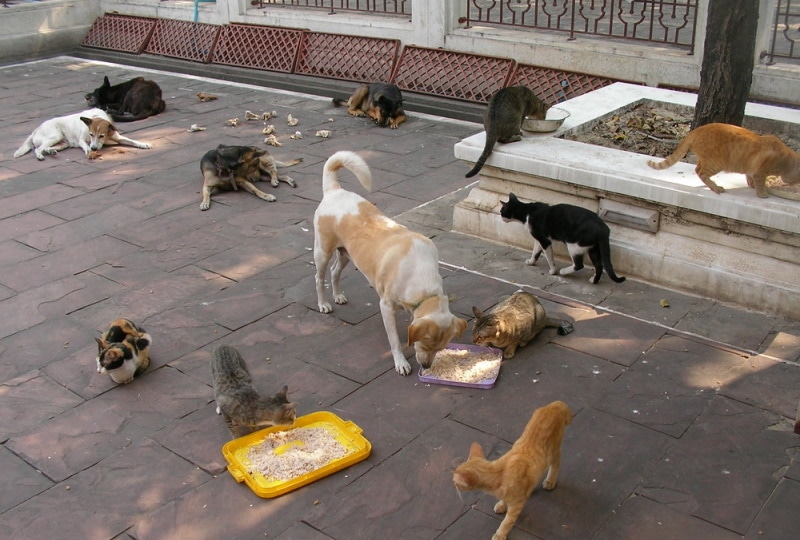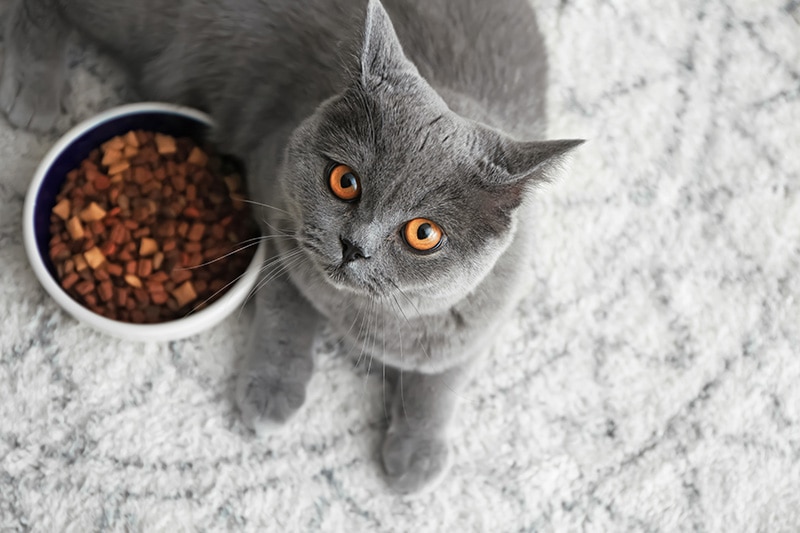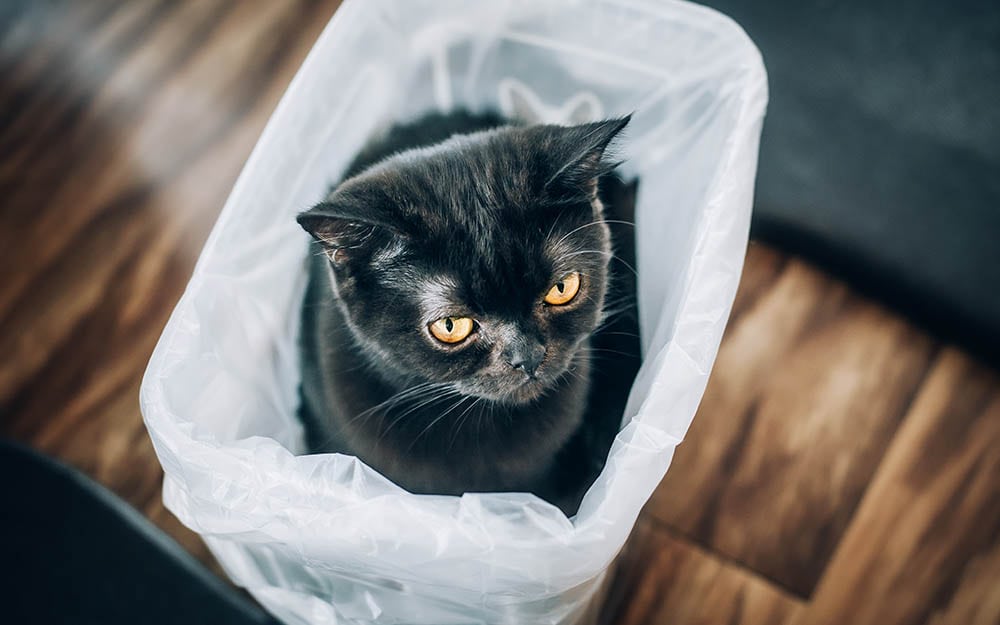Feeding Your Cat or Kitten: Feeding Chart, Methods & Schedule

Updated on
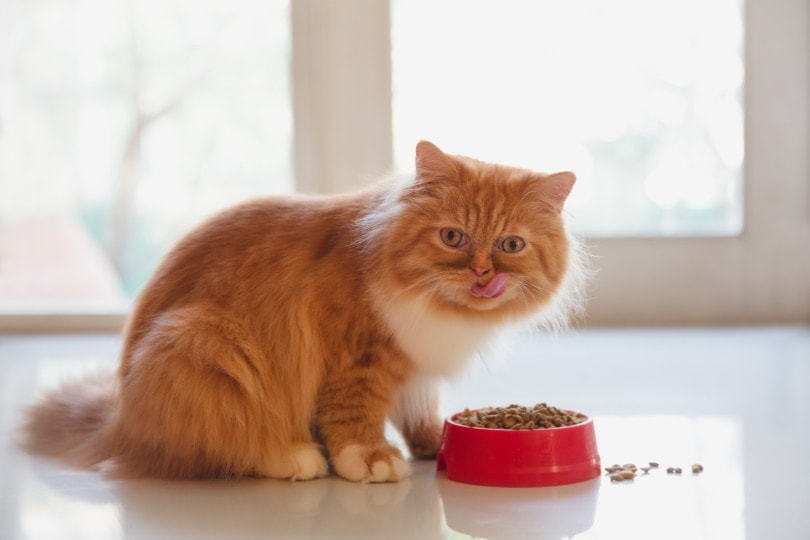
Feeding your cat or kitten correctly is one of the most important tasks for cat owners. Making sure your cat gets the right type of food at the right time is critical for their health and well-being. Too little food can lead to nutritional deficiencies, while too much can result in obesity and associated health problems.
Finding the perfect combination for your kitten or cat can take a little trial and error, but by following the amounts that we suggest here, you’ll be well on your way to keeping your feline happy and healthy. The method that you use to feed your cat also matters. Whether you decide to go for free feeding or set meal times, we let you know all the pros and cons, so you can choose the perfect combination for your cat.
Methods
When it comes to feeding your cat or kitten, there are a few different options. The most popular methods are free-feeding or monitored meal times. Let’s take a look at the pros and cons of each.
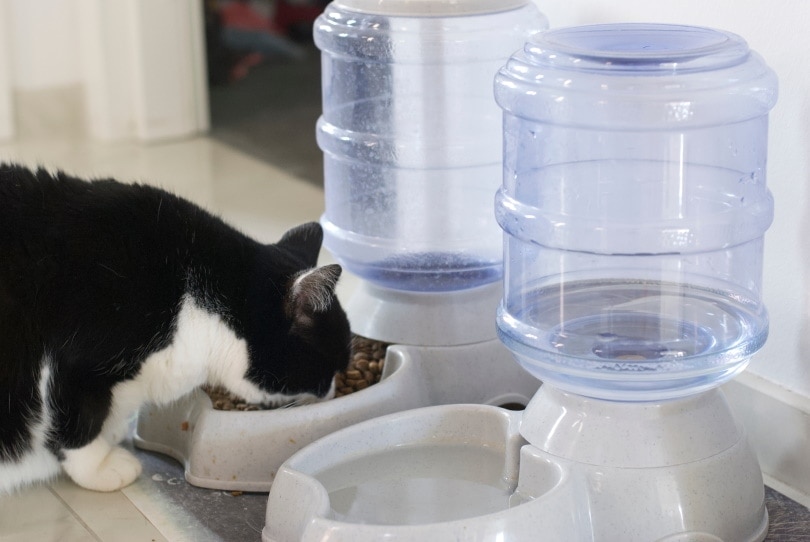
Free Feeding
Free feeding involves leaving food out for your cat at all times. They can self-select how much they want to eat and when.
- Your cat can always eat when they’re hungry
- It works well for kittens
- Dominant cats may stop other cats from eating
- Too much food can cause obesity
- It’s difficult to tell how much each cat is eating
- Wet food left out can quickly spoil
Monitored Meal Times
For monitored meal times, you only put cat food out at set times and remove whatever your cat hasn’t eaten once they’ve finished.
- The amount that your cat eats can be closely monitored
- Cats don’t need to fight over food
- Different cats can be fed different types of food
- Your cat might get hungry between meals
- You need to be home for set meal times
You’ll need to use your judgment to decide which method suits you and your cat best. Free feeding can work well for kittens because they need to eat more frequently than adult cats. If you do decide to follow set meal times, remember that your cat will be ready and waiting! If you plan to go out for the day and will miss a mealtime as a result, think about investing in an automatic feeder that can dispense a set amount of food at a pre-programmed time.
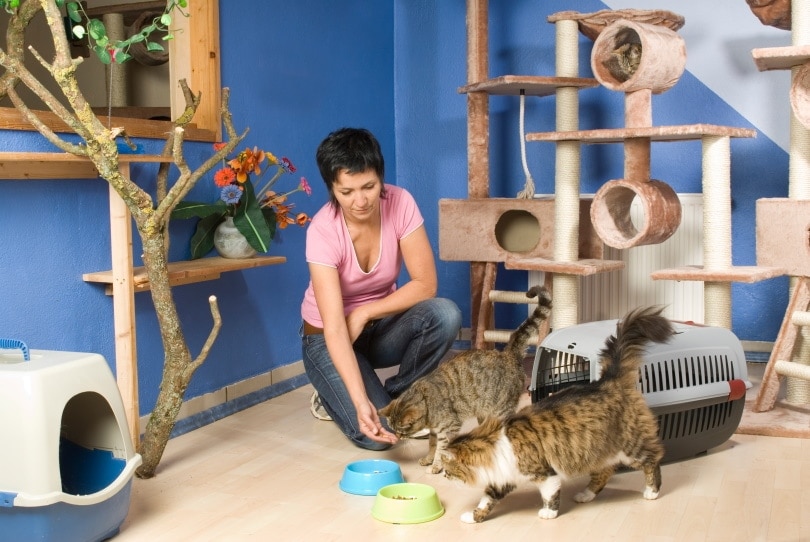
How Much to Feed Your Kitten
Once kittens are around 8 weeks old, they can start to eat wet food as they wean off their mother cat’s milk. Make sure whatever brand you choose is formulated for the “growth and development” stage. This means it will contain all the vitamins and minerals that your kitten needs to grow up big and strong. Kittens should always be fed wet food to start with because it’s much easier for them to eat and digest. Once they’re comfortable eating wet food, you can transition them to kibble. Add a little kitten formula to soften up the kibble as they get used to eating it.
We recommend the following amounts as a starting point. Always double-check the quantities advised by each individual manufacturer, and ask your vet for more advice if you’re unsure.
| Kitten age | Weight (pounds) | Quantity of food (grams) | Meals per day |
| 8 weeks | 1.3–2.6 | 65 wet food | 3–4 |
| 2–3 months | 2–2.4 | 65–110 wet food | 3–4 |
| 3–6 months | 3–5.7 | 130–165 wet food or 30–50 kibble | 2 |
| 6–9 months | 6–10 | 160–215 wet food or
45–60 kibble |
2 |
| 9–12 months | 7–15 pounds | 150–300 wet food or 50–85 kibble | 2 |
The ideal cat bowl will be there with your kitten as they grow and last them well into adulthood, which is why our Hepper NomNom Cat Bowl was designed to cater specifically to the needs of our feline companions at any age. The stainless steel, shallow bowls are the perfect depth for kittens who would otherwise struggle to reach the bottom of traditional bowls and offer whisker support for future feedings as they mature. Invest in something as practical and fun as your kitty - our Hepper NomNom Cat Bowl.
How Much to Feed Your Cat
As your kitten approaches their first birthday, you can start to think about transitioning them to adult cat food. These should be labeled as formulated for the “maintenance” stage. Use these quantities as a guide, but remember to adjust them depending on the activity levels and health of your cat.
We recommend the following amounts as a starting point. Always double-check the quantities advised by each individual manufacturer, and ask your vet for more advice if you’re unsure.
| Cat age (years) | Weight (pounds) | Quantity of food (grams) | Meals per day |
| 1–5 | 8–20 | 160–365 wet food or
60–105 kibble |
1–2 |
| 5–10 | 8–20 | 160–365 wet food or
60–105 kibble |
1–2 |
| 10+ | 8–20 | 160–365 wet food or
60–105 kibble |
1–4 |
As your cat ages, you may decide to switch them to a brand designed specifically to meet the needs of older cats. These are supplemented with ingredients like glucosamine and omega-3 oils, designed to help your cat’s joints. Your vet will be best placed to advise you about what will work best for your cat.
What Affects How Much to Feed Your Kitten or Cat?
In these feeding guidelines, the quantities suggested are quite broad. That’s because the amount that you need to feed your kitten or cat will depend on a few different factors. Things to consider when deciding on the quantity to feed your cat include:
- Their breed
- Their body condition score
- Current weight
- Activity levels
- If they’ve been spayed or neutered
- Any health conditions
- Any allergies
We would also like to hand you a tool to know how much you should feed your cat to maintain their health.
The exact amount of calories an individual animal needs to maintain a healthy weight is variable and influenced by many factors including genetics, age, breed, and activity level. This tool is meant to be used only as a guideline for healthy individuals and does not substitute veterinary advice
Wet food contains more water, so you need to feed more of it to provide the same nutritional value as a smaller quantity of kibble. As cats don’t naturally drink much water, wet food can be a great way to add much-needed liquid to your cat’s diet, helping them stay hydrated.
If your cat is obese, you’ll need to speak to your vet about how to help them lose weight. Obesity carries major health risks, including:
- Diabetes mellitus
- Anesthetic complications
- Cancer
- Heart disease
- Hypertension
- Urinary bladder stones
- Osteoarthritis
Conclusion
Once you’ve covered all these points, you should be well on your way to finding the perfect feeding schedule for your kitten or cat. Commercial kitten and cat food brands have been designed to include all the vitamins and nutrients that each life stage needs to stay healthy, so choosing a high-quality food designed for your cat’s specific life stage is a great start.
Whether you choose to feed your cat wet food, kibble, or a combination of both will depend on your cat’s preferences and your circumstances. If you work away from home and have an active and healthy young cat, you may decide to leave them kibble to snack on during the day and give them a portion of wet food in the morning and evening. If you have an overweight adult cat, perhaps you’ll feed them a small portion of calorie-controlled food twice per day.
If you’re ever unsure about how to adjust your kitten or cat’s feeding regime to better suit their needs, ask your vet for advice, and soon, you’ll have the perfect tailored feeding plan.
Featured Image Credit: Patrick Foto, Shutterstock

